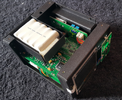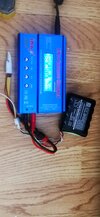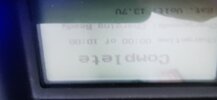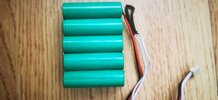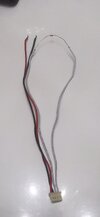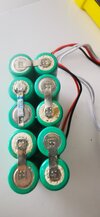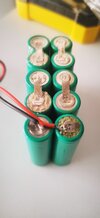Hi all,
to be honest I dont know the first thing about electronics
I am trying to find out why my sat finder keeps shutting down at 11.2V using a new 12V niCD battery pack?
I took the case off my unit and it looks like something has dried out? I have circled in yellow the place from a photo of how it should be it (the blue colour)?.
i would really appreciate if someone could tell me what it is please?
Thank you
to be honest I dont know the first thing about electronics
I am trying to find out why my sat finder keeps shutting down at 11.2V using a new 12V niCD battery pack?
I took the case off my unit and it looks like something has dried out? I have circled in yellow the place from a photo of how it should be it (the blue colour)?.
i would really appreciate if someone could tell me what it is please?
Thank you

